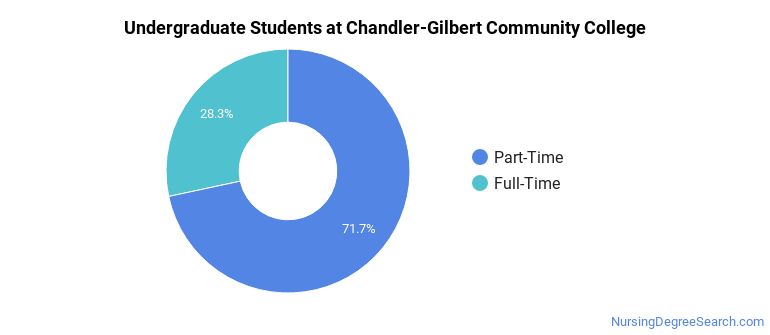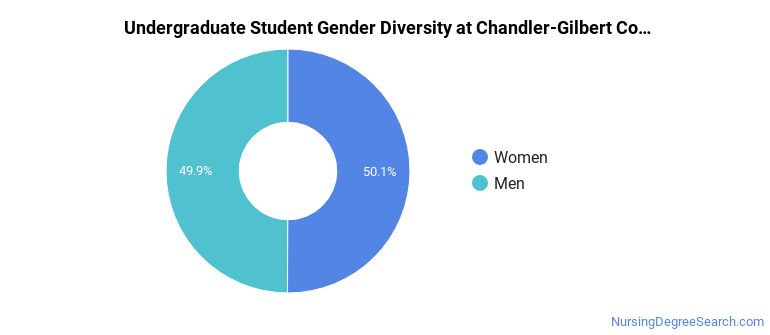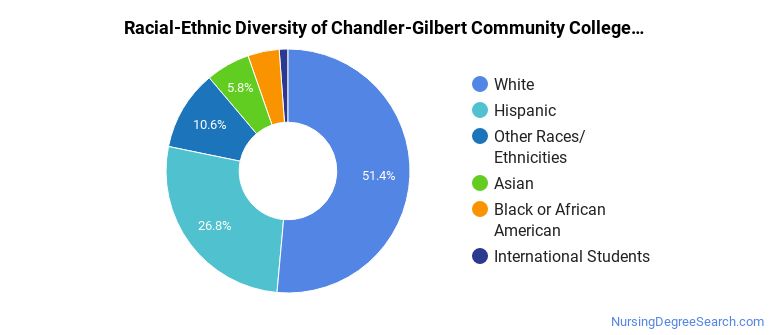Chandler-Gilbert Community College Nursing Programs
Chandler-Gilbert Community College is a public institution situated in Chandler, Arizona. The city atmosphere of Chandler makes it a great place for students who enjoy having lots of educational and entertainment options.
Where Is Chandler-Gilbert Community College?

Contact details for Chandler-Gilbert Community College are given below.
| Contact Details | |
|---|---|
| Address: | 2626 E Pecos Rd, Chandler, AZ 85225-2499 |
| Phone: | 480-732-7000 |
| Website: | www.cgc.maricopa.edu |
Can I Afford Chandler-Gilbert Community College?
Student Loan Debt
It's not uncommon for college students to take out loans to pay for school. In fact, almost 66% of students nationwide depend at least partially on loans. At Chandler-Gilbert Community College, approximately 9% of students took out student loans averaging $3,573 a year. That adds up to $14,292 over four years for those students.
Chandler-Gilbert Community College Undergraduate Student Diversity

Gender Diversity
Of the 3,797 full-time undergraduates at Chandler-Gilbert Community College, 50% are male and 50% are female.

Racial-Ethnic Diversity
The racial-ethnic breakdown of Chandler-Gilbert Community College students is as follows.

| Race/Ethnicity | Number of Grads |
|---|---|
| Asian | 222 |
| Black or African American | 158 |
| Hispanic or Latino | 1,017 |
| White | 1,953 |
| International Students | 44 |
| Other Races/Ethnicities | 403 |
Over 35 countries are represented at Chandler-Gilbert Community College. The most popular countries sending students to the school are China, South Korea, and Vietnam.
Chandler-Gilbert Community College Nursing Concentrations
The table below shows the number of awards for each concentration.
| Major | Associate’s | Undergraduate Certificate | TOTAL |
|---|---|---|---|
| Registered Nursing | 63 | 0 | 63 |
| Licensed Practical/Vocational Nurse Training | 0 | 4 | 4 |
| TOTAL | 63 | 4 | 67 |
References
*The racial-ethnic minorities count is calculated by taking the total number of students and subtracting white students, international students, and students whose race/ethnicity was unknown. This number is then divided by the total number of students at the school to obtain the racial-ethnic minorities percentage.
More about our data sources and methodologies.
